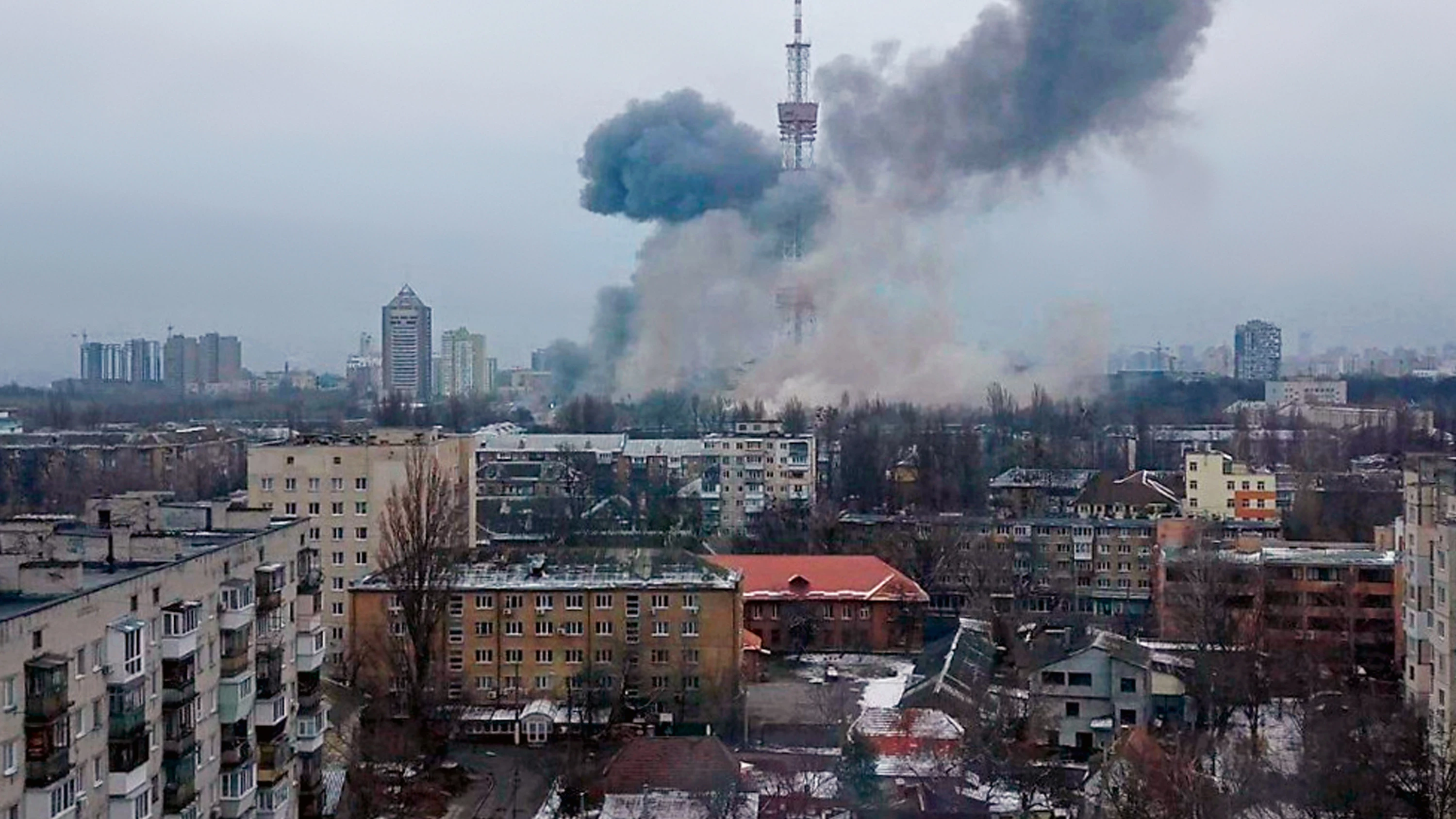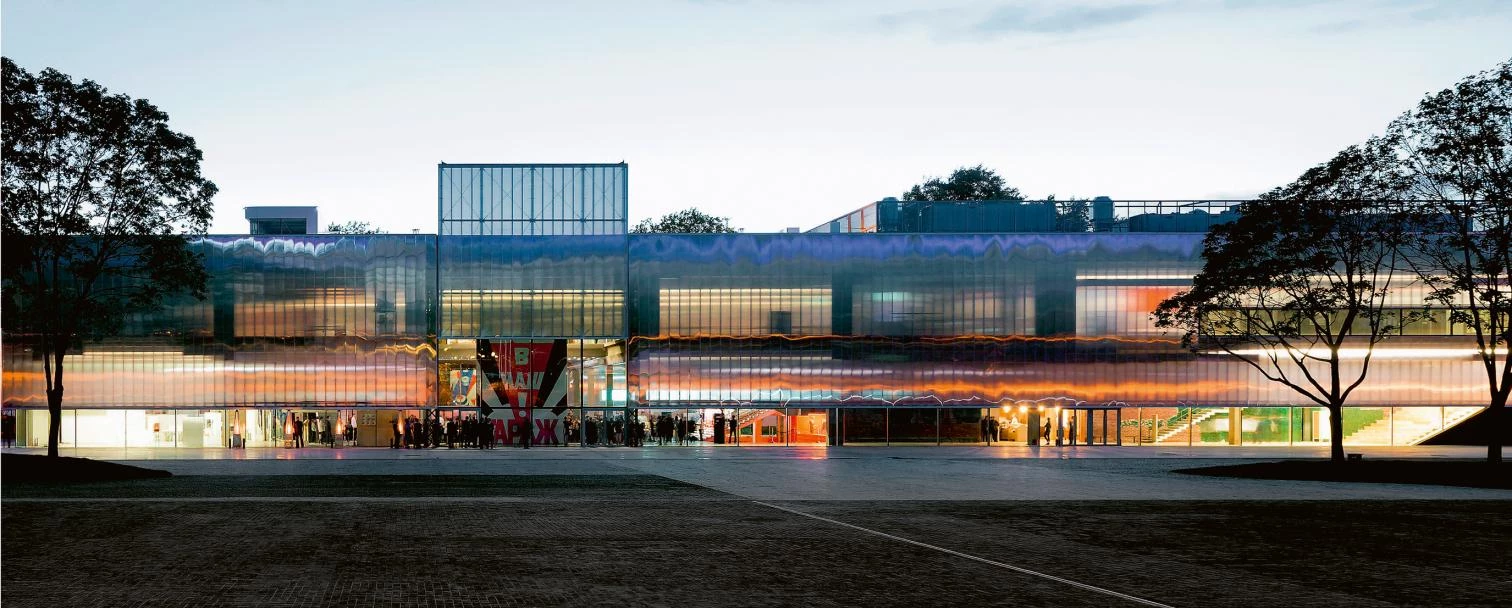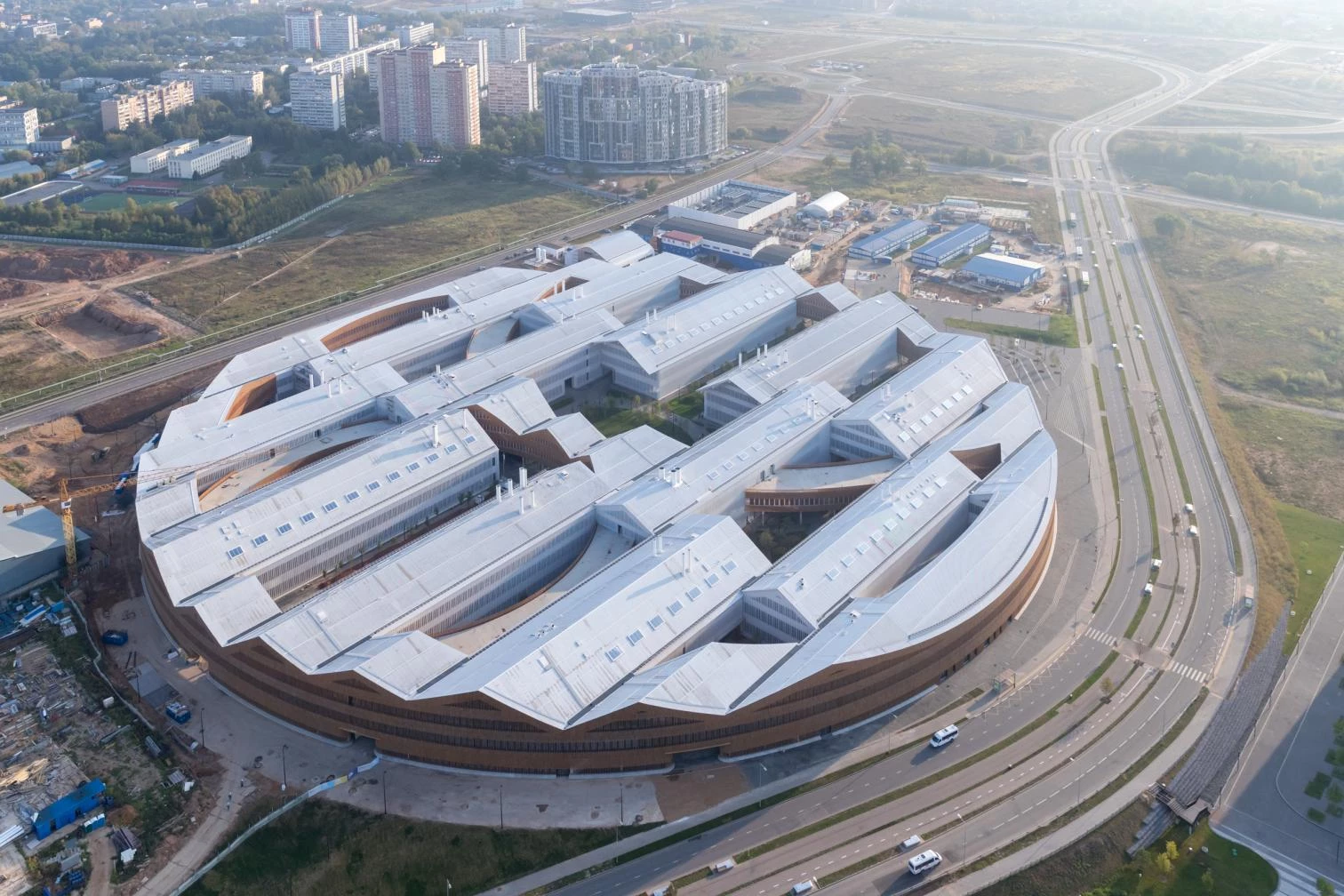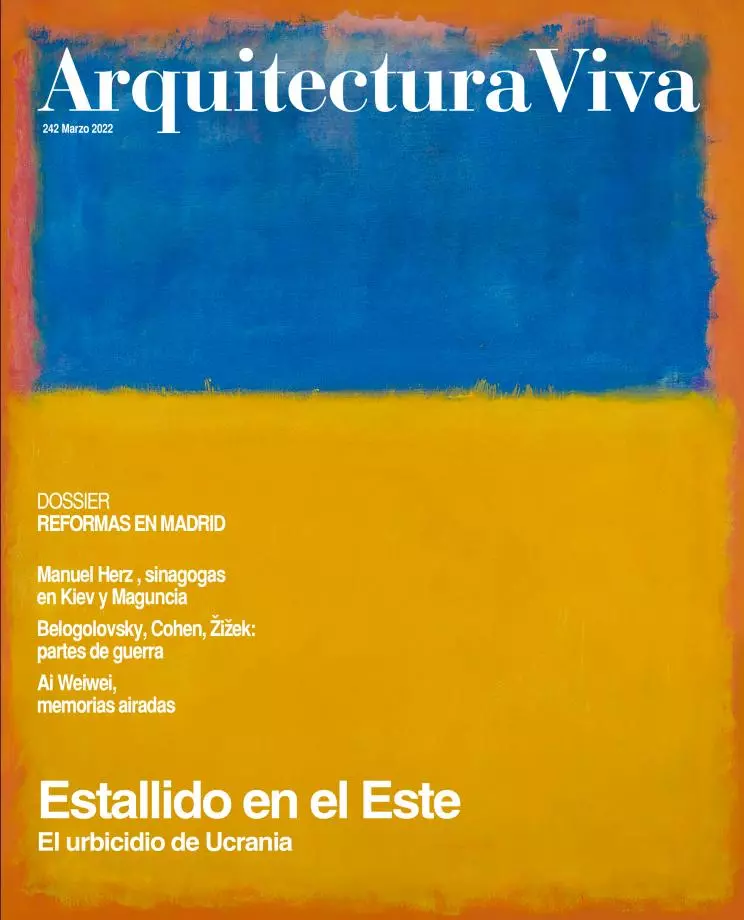
Bombing near Babi Yar © Ukraine NOW
It is hard to write about architecture, the creative and positive art form I love dearly, at a time when Putin’s criminal regime is bombing mercilessly and systematically my home country, Ukraine, a sovereign and proud European nation. Millions of people already fled the country and thousands have lost their lives defending it. Many of those who stayed are hiding in basements and metro stations, or afraid to leave their apartments. No one is safe. Much of the country’s infrastructure, across a dozen large cities and tens of towns and villages, is destroyed. Much of cultural and historical heritage is in danger and may be lost forever. Miraculously, the fire did not cause serious damage in Europe’s largest nuclear power plant near Zaporizhzhia. Bombs have fallen right next to the Babyn Yar memorial, the site of massacres carried out by Nazi Germany’s forces near Kyiv in 1941. There is chaos, fear, and suffering everywhere. It is hard to force myself to write straightforwardly – the Russian army is destroying our civilization. But it is already an irrefutable fact: the country that fought for and won peace in World War II has become Nazi Germany of the 21st century. This is unimaginable. This will never be forgotten, nor forgiven. But I want everyone to know that democratic Ukraine will prevail because it is on the right side. Russia is the aggressor. Ukraine will rebuild its beautiful cities and share its unbounded hospitality with the world.
When in September last year I interviewed Sergey Kuznetsov, the chief architect of Moscow since 2012, I thought he had the most enviable job in the whole world. “Just think of it – I have an opportunity to imagine new projects on the scale of a huge metropolis, one of the biggest and one of the most dynamic in the world. I am not even sure if there is another city that would be changing its image so swiftly,” said the architect. It is true. It was true then. The sheer grandiosity of Moscow’s recent development and its ambitious plans were mindboggling. What is Europe’s by far biggest city – over 20 million residents including its metropolitan area – has embarked on such projects as relocating more than one million Muscovites from dilapidated Soviet-era housing blocks to newly built high-rises; building dozens of new skyscrapers in Moscow City, Manhattan on the Moskva River; developing huge new urban districts; and opening close to 100 new metro stations in the last few years, and planning as many additional ones. And let’s not forget the Skolkovo Innovation Center, the so-called Russian Silicon Valley, the first science city under construction, from scratch, in modern Russia. And there are many world-class cultural and entertainment facilities – already completed, under construction, and in the planning stages. Guess who designed them. Think of the projects built for the 2008 Beijing Olympics; there happens to be a similar scale of production in Moscow and a similar or longer list of ‘starchitects’ from Continental Europe, Britain, Japan, and the United States.
Many of these projects are now suspended and some – including the Garage Museum (OMA, 2015), the GES-2 cultural center (Renzo Piano, 2021), and the Strelka Institute, which has operated as a privately funded school since 2009 and was initially guided by Koolhaas creatively – have halted their programs indefinitely, following the Russian invasion. There is now a spectacular exodus of western companies – from Boeing to McDonald’s, the symbol of capitalism in Russia (when this franchise first opened in Moscow in 1990, the restaurant served 30,000 people!). In recent days, architects who have decided to close their practices in Russia to protest the war include Foster+Partners, Zaha Hadid Architects, OMA, Herzog & de Meuron, David Chipperfield, MVRDV, Snøhetta, Diller Scofidio+Renfro, and UNStudio. Many of these architects worked on numerous projects in Moscow and across Russia. Unions of architects from around the world condemned the war in Ukraine. Russian architects will no longer be allowed to participate in international architectural competitions and prestigious forums. Leading western universities are breaking their ties with Russian schools and academies. Wealthy Russians are resigning from the boards of reputable cultural institutions worldwide. And theater companies are firing famous musicians and singers because of their support of Mr. Putin.
Things to Come
Many Russian architects feel betrayed, thinking that the whole world is against their country. They must understand that these actions are being taken against their criminal government because anyone who continues to do business in Russia supports it. At the same time, I am proud of thousands of Russian architects and designers who are against the war. More than 6,800 of them signed an online petition that declared their position: “…All wars devalue the very essence of the architect’s creative activity… Your neighbor’s respect can only be earned by improving your own home and country, not by winning it in a military battle by brute force.” This petition was taken down on 4 March 2022, when the government hurriedly adopted a law that bans all criticism of its actions. This new law specifically prohibits Russians from using the word ‘war’ in relation to what is officially described as a ‘special operation’ in Ukraine. Russians are now forced to adopt ‘doublespeak,’ to use the Orwellian term. Thousands of anti-war protesters continue voicing their opposition to the war, risking being prosecuted as extremists and terrorists. Is it too little too late? Russia has turned into a full-blown totalitarian, fascist state. All opposition is crushed. One man now decides the fate of the entire country. Not only is Russia now isolated from the rest of the world, but its Führer is also isolated from the Russian people and even from his own government. What’s next? There are so many scenarios, none very cheerful.
In the meantime, the Ukrainians are fighting for their survival, but also for the survival of all of Europe, and honestly, our entire world. Ukraine’s brave and popular President Volodymyr Zelensky is in besieged Kyiv and has become the symbol of national resistance. Still, people continue to die, and cities are being destroyed. This senseless bloodshed must stop now.
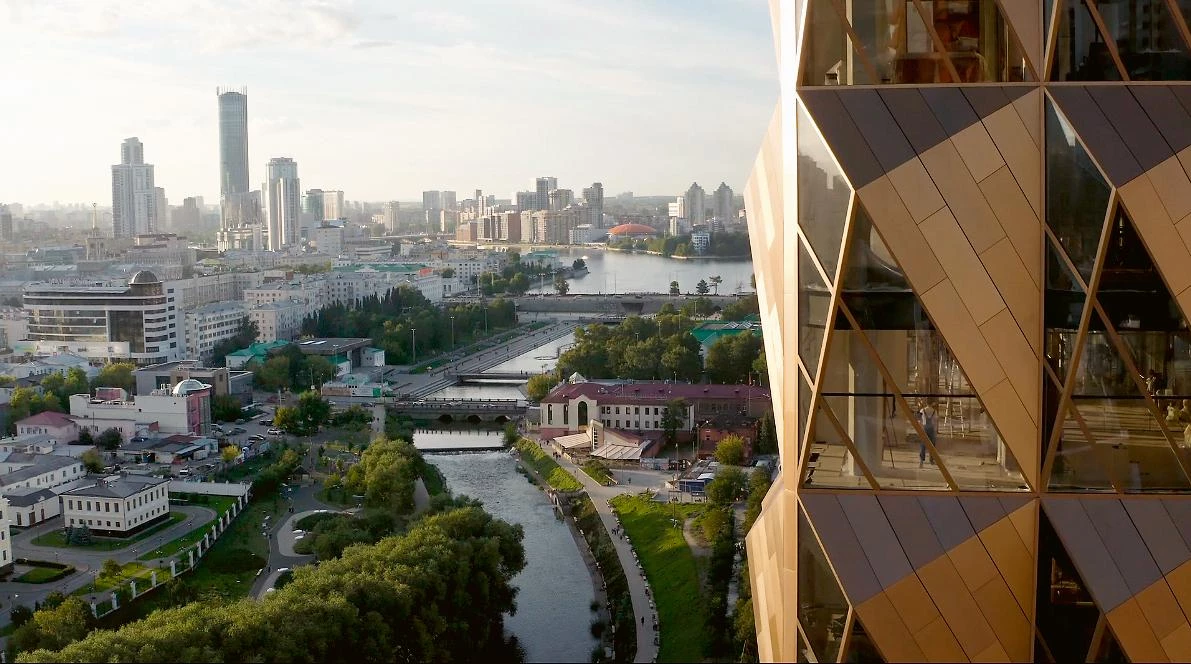
Foster+Partners, RCC HQ in Ekaterimburg, 2021
Architecture and war are two entirely opposite forces. One should be extinguished before the other can proceed. Architecture is a slow art, although architects can be very swift at times. Some sketched their visionary proposals the day the Twin Towers fell, on 11 September 2001, in my new hometown, New York. Perhaps this swiftness is a good thing. We must not stop being creative and we must always imagine what comes next and how to rebuild. When the war is finished, we will be building entirely new cities with gardens on the ground and bridges in the sky. It is natural for people to want to create works of art, joy, and beauty, not to fight each other. One day all the dreamers will get together to build a fantastic world! Then I want all the architects who are now leaving to relocate their Russian offices to liberated Ukraine. I also want them to take part in rebuilding and establishing new schools of architecture in Ukraine. And guess who will pay for all the rebuilding? You guessed it right – the new democratic and demilitarized Russia. And Russian architects will take an active part in that process. It will be the chief architect of Kyiv who will have the most enviable job in the world! By then Mr. Putin will be long gone, and the world will be a very different place – united, free, prosperous, and more beautiful than ever before. That moment will come, I am sure of it. When the cannons are heard, the muses are silent. When the cannons are silent, the muses are heard.
Vladimir Belogolovsky is a curator and a critic born in Odessa and trained as an architect in New York, from where he keeps in close touch with the Russian scene.

